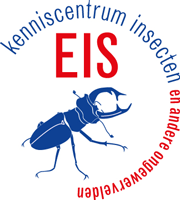| Reële kans op vestiging? |
Ja |
|
| Betrouwbaarheid beoordeling |
Grote mate van zekerheid (meerdere bronnen) |
|
| Vestigingsstatus |
Gevestigd |
|
| Zeldzaamheid |
Lokaal |
|
| Invasiviteit |
Potentieel invasief |
|
| Invasiviteit (toelichting) |
The natural distribution of B. neritina is unclear but may prove to be the Northern Atlantic Ocean. It is a common fouling organism worldwide, reported from all seas except sub Arctic and sub Antarctic regions. Colonies are typically found intertidal in harbours and embayments, attached to more or less natural substrate (stones, seaweeds) and a variety of artificial substrata, including ship hulls, piers, buoys and other man-made structures (Mackie et al., 2006). Its invasiveness is shown by its cosmopolitan distribution, its adaptability to live in different environments, its temperature and salinity range (euhaline and polyhaline: salinity around 30-18‰; Winston, 1977) and its survival techniques (includig an annual period of dormancy, dependent upon water temperatures). The species may also tolerate high levels of pollution (including copper), which provides it with a competitive advantage in polluted areas (Piola and Johnston 2006; Cabi, 2008). |
|
| Type introductie |
Niet opzettelijk |
|
| Jaar van eerste introductie |
2007 |
|
| Jaar van eerste melding |
2007 |
|
| Natuurlijke verspreiding |
Onbekend |
|
| Verspreiding in Nederland |
Zeeland |
|
| Verspreiding in Nederland (toelichting) |
This species was found for the first time in the Netherlands in 2007 in a marina at Burghsluis in the Eastern Scheldt (Faasse, 2007). A few months later it had reproduced. It survived winter as an established species and was spreading over the entire marina the next year. As yet it is not known from other localities in the Netherlands. |
|
| Habitats |
Mariene habitats |
|
Estuaria en brakwatergebieden |
|
| Wijze van introductie |
Aangroei op scheepsrompen |
|
Onderling verbonden waterwegen/bassins/zeeën |
|
| Impact |
Concurrentie |
|
| Ecologische impact (toelichting) |
B. neritina frequently settles on algae, established bryozoan colonies, oyster shells and other organic material. Apart from overgrowing certain organisms, the species may compete for space and food. The species is still (very) local in the Netherlands and there are no indications of major ecological impact yet. |
|
| Economische impact (toelichting) |
Larvae and adult specimens collected in Botany Bay, Australia of ‘Bugula neritina’ proved highly resistant to dissolved copper, an active agent in many antifouling paints. Therefore this species might have an extra potential to foul coated hulls (Piola & Johnston, 2006). B. neritina is a fouling species in aquaculture, it may attaches to oyster shells. Tiny colonies may be attached to the sides of ballast tanks or on floating material inside the ballast tanks (Cohen 2005). Apart from being transported with aquaculture materials and ballast water, ship/boat hull fouling is the most common and likely means of movement and the source of ongoing introductions. The species is highly likely to be accidentally transported. Fouling of materials may prove to be costly and difficult to prefent. B. neritina colonies are the source of a chemical compound (bryostatin), shown to be effective against leukaemia and other kinds of cancer (Tilbrook, 2004). |
|


